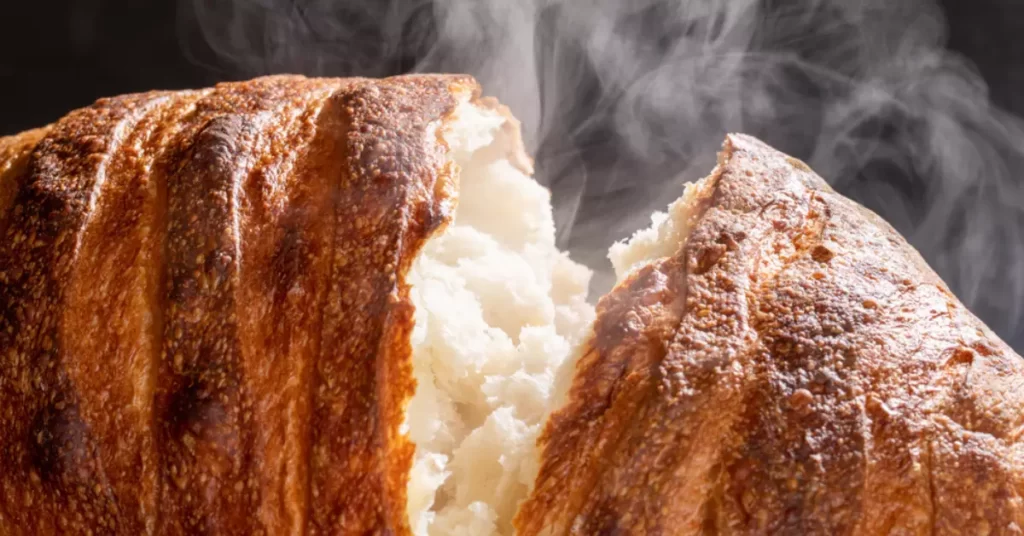Baking bread at home is an enjoyable and rewarding process. However, one of the most important steps in making bread is allowing it to rise properly.
But, have you ever wondered what happens if you let the bread rise for too long? In this article, we will explore the consequences of letting bread rise for an extended period and provide tips for achieving the perfect rise.
Understanding Bread Rising
The Role of Yeast
Yeast is a microscopic fungus that plays a crucial role in the rising of bread dough. When combined with warm water and sugar, yeast ferments, producing carbon dioxide gas. This gas is then trapped within the dough, causing it to expand and rise.
The Importance of Gluten
Gluten, a protein found in wheat flour, is another essential component in bread making. When mixed with water, gluten forms a stretchy network that helps trap the carbon dioxide produced by yeast. This network is what gives bread its structure and elasticity.
The Stages of Bread Rising
First Rise
The first rise, also known as bulk fermentation or proofing, is when the dough is left to rest and rise after being mixed and kneaded. During this stage, yeast ferments sugars, producing carbon dioxide gas and causing the dough to expand.
Second Rise
After the first rise, the dough is punched down to release some of the gas and redistribute the yeast. The dough is then shaped into loaves and left to rise again. This second rise, also called the final proof or final rise, allows the dough to develop its final shape and structure.

What Happens When Bread Rises Too Long?
Overproofed Bread
If bread dough rises for too long, it becomes overproofed. Overproofing occurs when the yeast exhausts its food supply (sugar), producing excess alcohol and carbon dioxide. This can weaken the gluten structure, causing the dough to collapse and resulting in a dense, heavy loaf.
The Impact on Texture and Taste
Overproofed bread has a denser, chewier texture due to the weakened gluten structure. Additionally, the excess alcohol produced by the yeast can impart an unpleasant, sour taste to the bread.
Recognizing Overproofed Bread
To determine if your dough is overproofed, gently press it with a fingertip. If the indentation remains and does not bounce back, the dough is likely overproofed.
How to Save Overproofed Bread
If your dough has overproofed, you can try to save it by gently degassing it, reshaping it, and allowing it to rise for a shorter period. However, the texture and taste may still be
affected, so it’s best to closely monitor the dough during the rising process to prevent overproofing in the first place.
Tips for Preventing Overproofing
To prevent overproofing, follow these tips:
- Use a timer to keep track of the rising time.
- Monitor the dough’s size, looking for it to double or almost double in volume.
- Pay attention to the temperature, as warmer environments can speed up the rising process.
The Effects of Temperature on Bread Rising
Temperature plays a significant role in bread rising. Warmer temperatures cause yeast to ferment more quickly, speeding up the rising process. Conversely, colder temperatures can slow down fermentation. To achieve the optimal rise, aim for a consistent temperature between 75°F and 80°F (24°C and 27°C).
The Role of Different Types of Yeast
There are various types of yeast used in bread making, and each can impact the rising process differently. For example, active dry yeast needs to be dissolved in warm water before being added to the dough, while instant yeast can be mixed directly into the dry ingredients.
The type of yeast you use can affect the rising time, so be sure to follow the specific instructions provided in your recipe.
Frequently Asked Questions
Can I use a different type of yeast than what my recipe calls for?
Yes, you can usually substitute one type of yeast for another. However, the rising times and method of incorporation may differ, so be sure to adjust accordingly.
Can I speed up the bread rising process?
While it is possible to speed up the rising process by increasing the temperature or using more yeast, this can compromise the flavor and texture of your bread. It’s best to allow the dough to rise at its natural pace for optimal results.
How can I tell if my yeast is still active?
To test if your yeast is still active, dissolve a small amount in warm water with a pinch of sugar. If it becomes foamy within 5-10 minutes, the yeast is active and can be used in your recipe.
Conclusion
While it’s tempting to let your bread dough rise for as long as possible, doing so can lead to overproofing and negatively impact the final product.
By understanding the bread rising process, monitoring the dough’s progress, and considering factors such as temperature and yeast type, you can achieve the perfect rise and bake delicious, well-structured loaves every time.
